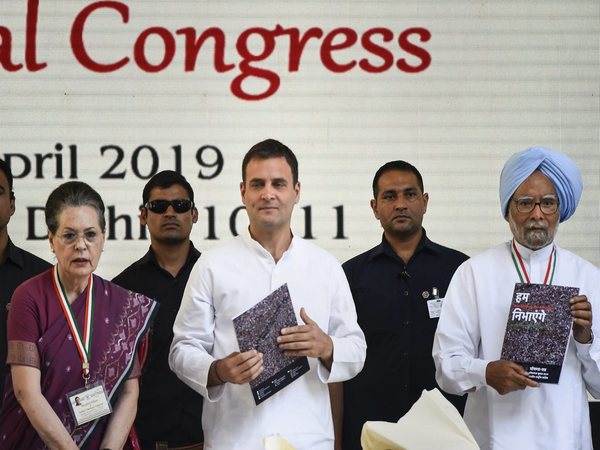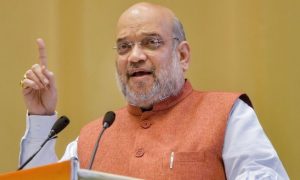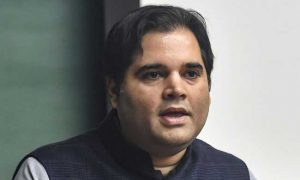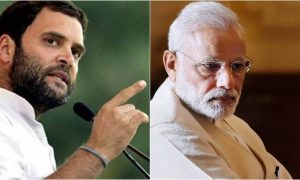On 25 March, Congress president Rahul Gandhi announced the Nyuntam Aay Yojana, or NYAY scheme. The plan is to give₹6,000 every month to the bottom 20% of the population of around 5 crore families or 25 crore individuals. Gandhi’s proposal is not that of universal basic income (UBI), of which there has been a lot of talk in the recent past. UBI is basically a small amount of money paid every month to every citizen of a country, without any terms and conditions. In the case of NYAY, the plan is to pay money to the bottom 20% only and not every citizen as UBI envisages.
If and when it is launched, NYAY will be by far the biggest basic income scheme anywhere in the world. Given that there are valid concerns on the viability of the scheme and the impact it is likely to have on the Indian economy, we try and address some of the concerns in detail.
Concern 1: It will make beggars of people
This concern comes from the fact that the government will be distributing free money under the NYAY scheme with no conditions attached. If one looks at the PM-KISAN Samman Nidhi scheme, it is already doing the same though to families which own agricultural land of less than two hectares. Of course, the amount in case of PM-KISAN is much lower at Rs2,000 per quarter against the ₹6,000 per month promised under NYAY. But ultimately free money is free money, irrespective of whether it is being given by the current government or proposed by an opposition party.
Also, anyone who looks at basic income as something for nothing, should have issues with other forms of the same phenomenon. Guy Standing, an economist at the School Of Oriental and African Studies, University of London, writes about this in Basic Income: And How We Can Make It Happen, “Anyone opposing basic income on this ground (free money) should also oppose all wealth inheritance and all other forms of income that are not derived from productive activity… They should oppose all the selective tax breaks… which mostly benefit the affluent who have done nothing to ‘earn’ them.”
Concern 2: It will lead to inflation
This concern stems from the fact that incomes of a large section of population will go up suddenly. This higher income will chase the same set of goods and services available in the market and will ultimately lead to higher prices. In theory, this makes immense sense. When people suggest that basic income schemes will lead to inflation, they tend to believe that the supply of goods and services will continue to remain the same, despite an increase in income. The trouble is that there is a lot of evidence to the contrary.
Let’s take the example of the basic income pilot study carried out in Madhya Pradesh between 2009-13. As Standing points out: “Villagers’ increased purchasing power led to local farmers to plant more rice and wheat, use more fertilizer and cultivate more of their land. Their earnings went up, while the unit price of food went down.” In fact, a similar thing happened with clothes. As people earned more, the demand for better clothes went up. Women in the villages saw this as an entrepreneurial opportunity. They bought sewing machines and material to sew new clothes. A new market was created where none existed. As Standing puts it: “A similar response could be expected in any community where there are people who want to earn more and do more.”
Evidence from many such studies carried out in Africa seems to suggest the same. As a Unicef document titled From Evidence to Action: The Story of Cash Transfers and Impact Evaluation in Sub-Saharan Africa points out: “With the exception of temporary price increases occurring during payment periods, there is no evidence that the cash transfers have led to inflation.”
There are a couple of other things that need to be stated here. Demonetisation destroyed a large part of the informal economy in India, rendering many Indians jobless. Of course, there is also the case of India’s demographic dividend, or the fact that 10-12 million Indian youth are entering the workforce every year and for whom enough jobs are not being created.
Given this, as the Unicef document mentioned earlier points out: “In an economy with high levels of unemployment, a stimulus programme like cash transfers (which is what any basic income scheme basically is) may increase the local labour demand without exerting significant upward pressure on wages.”
Of course, one also needs to take into account the fact that NYAY, if ever implemented, will be the largest basic income scheme in the world. Hence, it will be important to implement it gradually across the length and breadth of India, to rein in any danger of inflation. While NYAY is not UBI in the strictest sense of the term, the Economic Survey 2016-17 essentially states that a guiding principle for UBI is gradualism. The Congress has talked about phased implementation.
Concern 3: People will spend on alcohol, cigarettes
In the Indian case, this concern comes from a patriarchal view of the society. As Arvind Subramanian writes in Of Counsel: The Challenges of the Modi-Jaitley Economy, “If men control the wallet, as they often do, cash transfers would be imprudently used—and used more in line with the preferences of adult males than the real needs of the family—which would make women and children worse off.”
The point being that if you give men the money, they will spend it on alcohol and tobacco. But is that really the case? As the Economic Survey 2016-17 points out: “One can define consumption on alcohol, tobacco and paan as consumption on ‘temptation goods’. The main finding is that these goods form a smaller share of overall budget/consumption as overall consumption rises. This is an indication that an increase in income from UBI alone will not necessarily lead to an increase in temptation goods consumption.”
In fact, the survey more specifically points out: “In the first place, there has been no statistical evidence of any increase in economic “bads” such as consumption of alcohol and tobacco. On the contrary, in Bhil tribal village, there was actually a drop in consumption of alcohol since that is where people had liquidity to use for agricultural inputs and therefore one saw an increase in agricultural productivity and own cultivation effect.”
Interestingly, evidence from Africa, is also along similar lines. As Rutger Bregman writes in Utopia for Realists: “The great thing about money is that people can use it to buy things they need instead of things that self-appointed experts think they need. And, as it happens, there is one category of product which poor people do not spend their free money on, and that’s alcohol and tobacco. In fact, a major study by the World Bank demonstrated that in 82% of all researched cases in Africa, Latin America, and Asia, alcohol and tobacco consumption actually declined.”
The Congress plans to tackle this problem by making the payment to women. In fact, former finance minister P. Chidambaram has said: “We will insist that every family should open an account in the name of the woman in the family and the money will be transferred to her account.”
Concern 4: People will stop working
The logic here is that free money from the government will make people lazy and this will lead to them dropping out of the labour force. Let’s look at this in the context of NYAY. An amount of ₹6,000 per month per household has been promised. An average Indian household has five individuals. So, this works out to ₹1,200 per month per individual, on an average. People who feel that individuals will opt out of the workforce because the unit members are earning ₹1,200 per month extra, have a very low opinion of the ambitions of Indians. Also, if they stop working, their situation may continue to be the same as it was earlier, and the entire benefit of the extra money will be nullified. This concern largely comes from the wrong belief of the rich and the middle class that the poor are poor because they are lazy.
There is evidence from different parts of the world which doesn’t suggest anything like this. As an August 2018 research paper titled Universal Basic Income: An Effective Policy for Poverty Reduction? published by the Centre for Social Justice, points out: “The extent to which UBI disincentives work is dependent on its generosity. The Alaska Permanent Fund pays out $2,000 annually, and analysis has shown that it has little to no effect on the supply of labour.” By that logic ₹1,200 per individual per month is not high at all.
In fact, the Canadian Mincome experiment carried out in the 1970s, had some very interesting evidence to offer on this front. As Standing points out: “In the Canadian Mincome experiment, ‘mothers with newborns stopped working because they wanted to stay at home longer with their babies, and teenagers worked less because they weren’t under much pressure to support their families, which resulted in more teenagers graduating’.” This is the kind of withdrawal from the labour force, which is good in the long term.
Concern 5: It will lead to higher taxes
In fact, this is the most genuine concern. NYAY is expected to cost ₹3.6 trillion or around 1.7% of the forecasted gross domestic product (GDP) for 2019-20. As Chidambaram has said: “Our calculation shows that it will not cross 2% of the GDP, it will be 1.8% of the GDP at any given point of time.” This is a lot of money, something which can easily derail the scheme as well as government finances. In economics, there is no free lunch, hence, the question is where is this money going to come from.
The Congress has hinted at doing away with some subsidies, sharing the cost with the state governments and raising new taxes. The total food, fertilizer and oil subsidies in 2019-20 are expected to be at ₹2.97 trillion, or 1.41% of the GDP. The point is that if the government is carrying out an income transfer to citizens, are the subsidies and many other government programmes really required?
As Subramanian writes in Of Counsel: “Currently, the government spends a lot of money to help the poor through a variety of schemes such as the MGNREGA, Janani Suraksha Yojana, PDS, fertilizers, MSPs, electricity, Integrated Child Development Services … Indira Awaas Yojana, National Livelihoods Mission, Ujjwala to name a few. In 2014-15, we conservatively estimated that there were more than a thousand central schemes, and many have been in place for a long time. (There is even one that is 96 years old.)”
NYAY can be a good way to rationalize the number of schemes run by the central government and improve state capacity i.e. the capacity to deliver on things, instead of just launching new schemes every year. Also, many of these schemes have huge leakages and are not well targeted. As Subramanian writes: “About only one-third of the fertilizer subsidy reaches small farmers; nearly 40% of the PDS kerosene was lost to leakage and about half the remainder reached the poor… Even the MGNREGA, which is self-selecting has an issue: expenditure are not highly correlated with places with the most extreme poverty.”
In this scenario, it makes a lot of sense to give money to people directly and let them do what they want to do with it. The problem is this will involve doing away with many existing systems, and hence, is easier said than done. Given this, removing all subsidies will be difficult and hence, taxes are likely to go up. As far as increasing taxes are concerned, economists who have studied UBI in detail in the Indian context, have suggested the return of wealth tax, a tax on agricultural income and an estate tax to maintain intergenerational equity.
A tax on agricultural income makes tremendous sense given that it is a major conduit for converting black money into white. The trouble is that these taxes will hurt the influential section of the economy i.e. the wealthy. Hence, it remains to be seen if they are implemented. Nevertheless, if the NYAY scheme has to become a reality, the money has to come from somewhere, and given that higher taxes in some form cannot really be ruled out.
Another big issue with NYAY will be the perpetual problem of identifying the right beneficiaries for the scheme. This can play spoilsport with the scheme as well. Having said that, basic income scheme is an idea whose time has come. The extreme poverty, with people in states like Bihar and Uttar Pradesh earning a very low income—which is a fraction of the incomes in other states—needs to be tackled on a war footing.
For more updates: Like us on Facebook and follow us on Twitter & Instagram





































